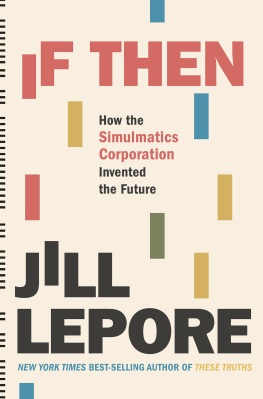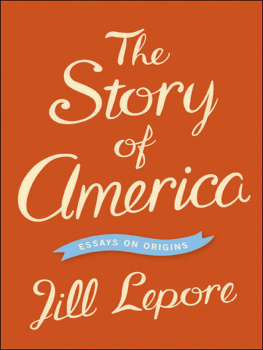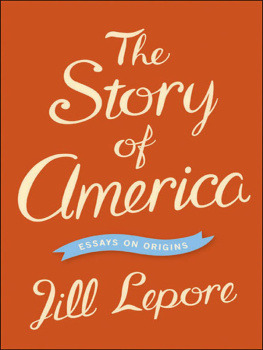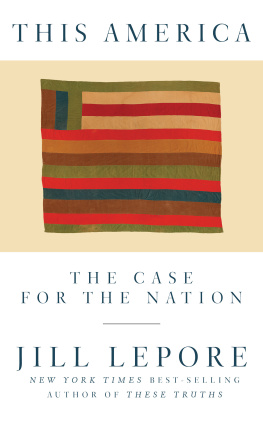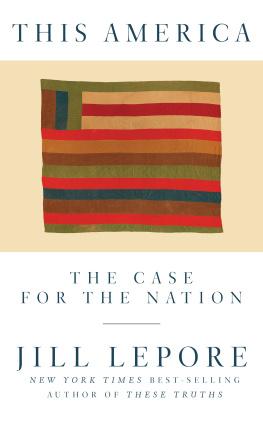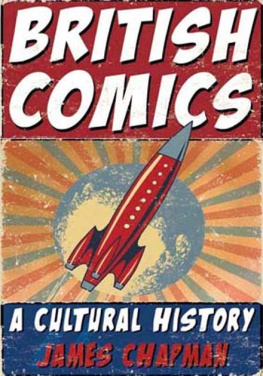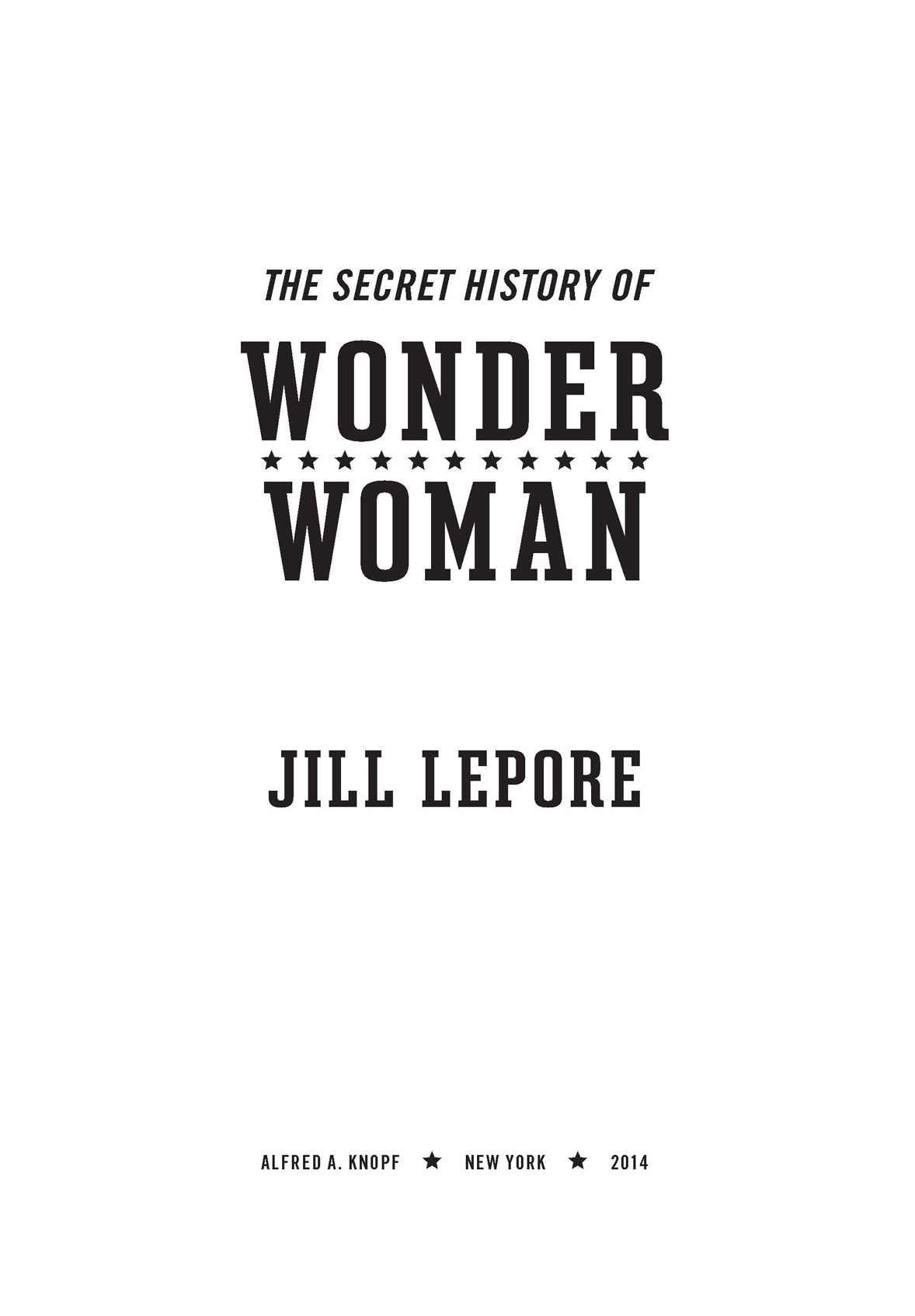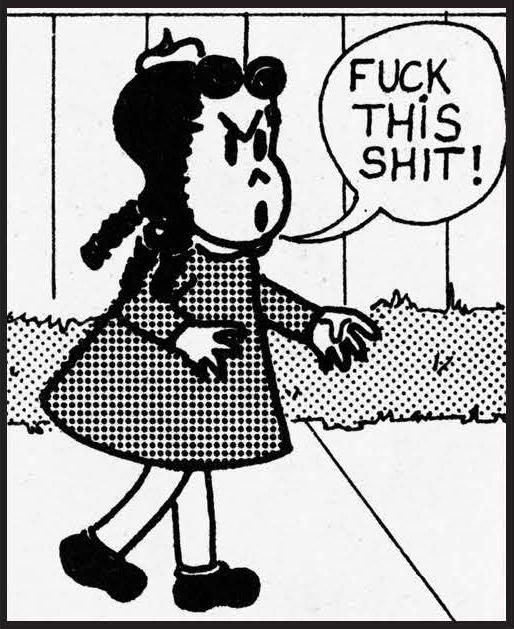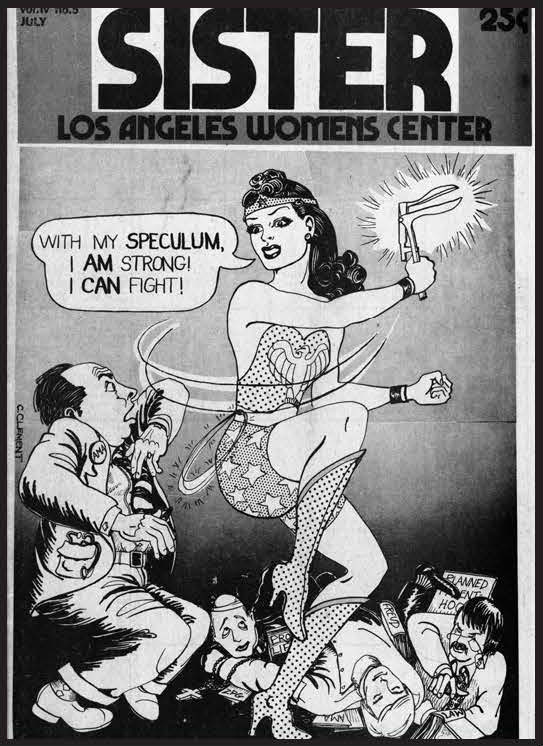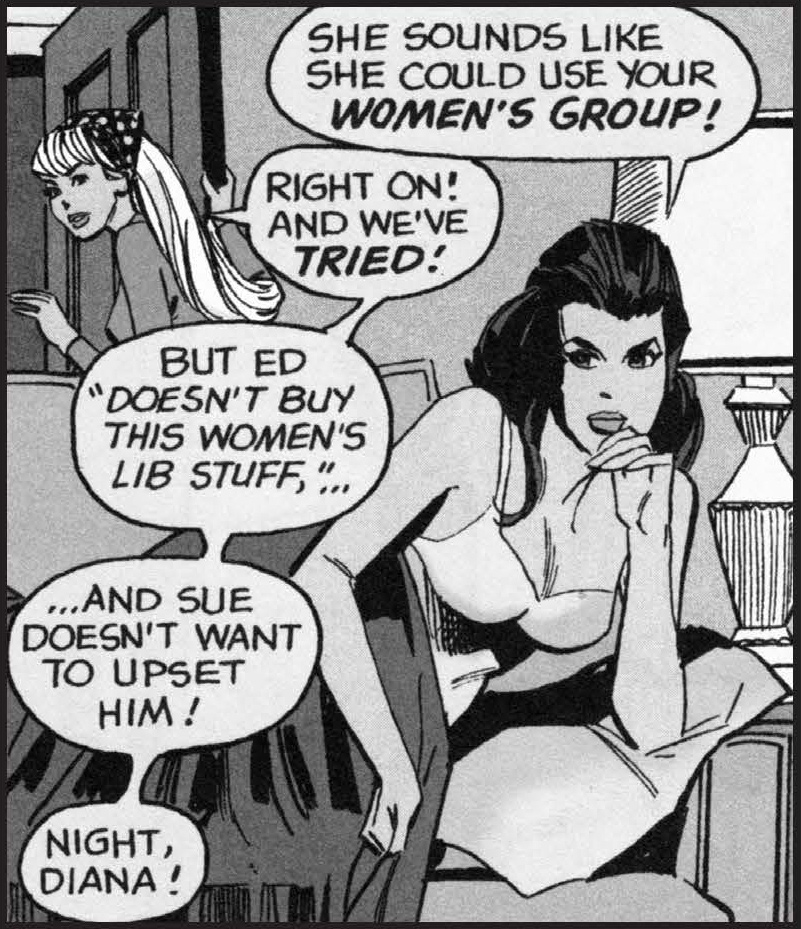THIS IS A BORZOI BOOK
PUBLISHED BY ALFRED A. KNOPF
Copyright 2014 by Jill Lepore
All rights reserved. Published in the United States by Alfred A. Knopf,
a division of Random House LLC, New York, and in Canada by Random House
of Canada Limited, Toronto, Penguin Random House companies.
www.aaknopf.com
Knopf, Borzoi Books, and the colophon are registered trademarks
of Random House LLC.
Library of Congress Cataloging-in-Publication Data
Lepore, Jill, [date]
The Secret History of Wonder Woman / by Jill Lepore.First edition.
pages cm
Includes bibliographical references and index.
ISBN 978-0-385-35404-2 (hardcover : alk. paper)ISBN 978-0-385-35405-9 (eBook)
1. Wonder Woman (Fictitious character) 2. Marston, William Moulton, 18931947.
3. Superhero comic books, strips, etc. 4. FeminismUnited StatesHistory.
5. Womens rightsUnited StatesHistory. I. Title.
PN6728.W6L48 2014
741.5973dc23
2014011064
Cover image: WONDER WOMAN is and DC Comics.
Cover design by Chip Kidd
v3.1
To Nancy F. Cott,
for making history
ALSO BY JILL LEPORE
Book of Ages
The Mansion of Happiness
The Story of America
The Whites of Their Eyes
New York Burning
A Is for American
The Name of War
A NOTE ABOUT THE AUTHOR
Jill Lepore is the David Woods Kemper 41 Professor of American History at Harvard University and a staff writer at The New Yorker. Book of Ages, her most recent book, was a finalist for the National Book Award. She lives in Cambridge, Massachusetts.
EPILOGUE
GREAT HERA! IM BACK!
Ms. was meant to be an organ for a revived feminist movement.
Wonder Woman was part of that revolution. In July 1970, the Womens Liberation Basement Press, in
From Breaking Out, It Aint Me Babe, July 1970
A nationwide Womens Strike for Equality was held on August 26, 1970, the fiftieth anniversary of the passage of the Nineteenth Amendment. A young writer named
By the beginning
When the July 1972 issue of
Looking back now at these Wonder Woman stories from the 40s, Steinem said, I am amazed by the strength of their feminist message. Steinem, born in Ohio in 1934, had loved the original Wonder Woman as a girl. Shed also had something to do with comics as a grown-up. In the 1960s, while working for
Wonder Woman had feminist beginnings, but like many of us, she went into a decline in the fifties, Edgar explained in her cover story.
Marston died in 1947, but Wonder Woman lived on. The new writers didnt understand her spirit, however, and she lost some of her original feminist orientation. Her superhuman strength remained, but her violence increased. Rather than proving her superiority over men, she became more and more submissive.
Edgar, like Steinem, was troubled that, beginning in 1968during what is known as the Diana Prince Era, when she wasnt even called Wonder Woman anymoreWonder Woman had lost both her costume and her superpowers. But, according to Edgar, with a renewed womens rights movement, all this was about to change. In 1971, DC Comics named Roubicek Woolfolk as Wonder Woman s new editor, and Edgar reported that she planned to bring back Marstons Wonder Woman: Ms. Woolfolk also plans to decrease violence in the plots and return our heroine to the feminism of her birth. And maybe to politics, too?
The founders of Ms. placed great faith in Wonder Womans ability to launch the magazine. The July 1972 issue featured not only WONDER WOMAN FOR PRESIDENT on the cover and Edgars article inside but also a four-page pullout, a reproduction of
Lovely and Wise Heroine Summoned to Help the Feminist Cause, the
In 1973, the year Wonder Woman was named a symbol of feminist revolt, the Supreme Court issued a ruling legalizing abortion. But the aftermath of Roe v. Wade didnt bolster the feminist movement; instead, it narrowed it. If 1972 was a legislative watershed, 1973 marked the beginning of a drought. Some gains were lost; others proved illusory. Even the idea that DC Comics was hiring Dorothy Roubicek Woolfolk to edit a new Wonder Woman comic book and return our heroine to the feminism of her birth turned out to be wrong.
From a 1973 feminist newsletter
Dorothy Roubicek Woolfolk did edit one issue of Wonder Woman in 1971, and another early in 1972; those issues are no different from any published during the Diana Prince Era. Roubicek Woolfolk sided with Steinemshe wanted Wonder Woman to get her superpowers backfor which she was fired, right about when the July 1972 issue of Ms. appeared on newsstands.
Ive just heard that youre no longer with
In July, out of work, Roubicek Woolfolk wrote to Steinem to tell her that shed gone on a public speaking tour, talking about womens liberation and the role of comics, and in every city she visited, Ms. was a sellout: I got the feeling the lively Wonder Woman cover didnt hurt sales a bit.
Roubicek Woolfolk had no hand in it, but in December 1972,


